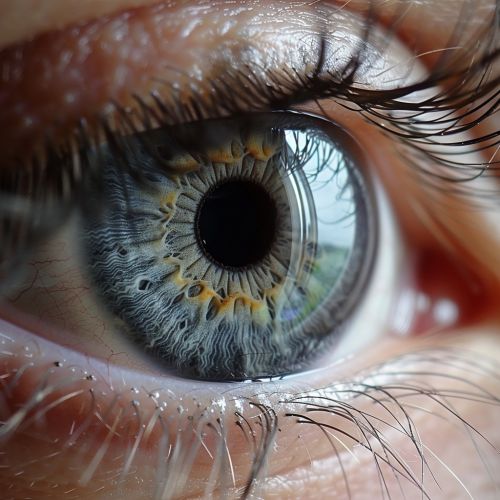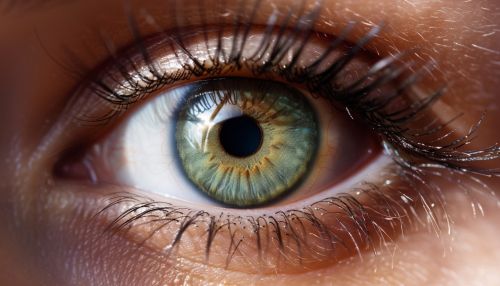Visual neuroscience
Introduction
Visual neuroscience is a subfield of neuroscience that focuses on the neural mechanisms underlying vision. It encompasses the study of the visual system, including the eyes, the visual pathways, and the brain regions involved in processing visual information. This field integrates knowledge from various disciplines, such as neurobiology, psychology, and computational neuroscience, to understand how visual perception is achieved and how visual information is processed and interpreted by the brain.
Anatomy of the Visual System
The Eye
The eye is the primary organ responsible for capturing light and converting it into neural signals. It consists of several key structures:
- **Cornea**: The transparent front layer of the eye that helps to focus incoming light.
- **Lens**: A flexible, transparent structure that further focuses light onto the retina.
- **Retina**: A layer of photoreceptor cells at the back of the eye that detects light and converts it into electrical signals.


The retina contains two main types of photoreceptors: rods and cones. Rods are responsible for vision in low light conditions, while cones are responsible for color vision and visual acuity.
Visual Pathways
Once light is converted into electrical signals by the photoreceptors, these signals are transmitted to the brain via the optic nerve. The visual pathways include:
- **Optic Nerve**: Transmits visual information from the retina to the brain.
- **Optic Chiasm**: The point where the optic nerves from both eyes partially cross, allowing visual information from each eye to be processed by both hemispheres of the brain.
- **Optic Tract**: The continuation of the optic nerve fibers after the optic chiasm.
- **Lateral Geniculate Nucleus (LGN)**: A relay center in the thalamus that processes and transmits visual information to the primary visual cortex.
Visual Processing in the Brain
Primary Visual Cortex (V1)
The primary visual cortex, also known as V1, is located in the occipital lobe of the brain. It is the first cortical area to receive visual input and is responsible for processing basic visual features such as orientation, spatial frequency, and motion. Neurons in V1 are organized into columns, each responding to specific visual stimuli.
Higher Visual Areas
Beyond V1, visual information is processed in a series of higher visual areas, each specializing in different aspects of vision. These areas include:
- **V2**: Processes complex shapes and contours.
- **V3**: Involved in processing motion and depth.
- **V4**: Specializes in color perception.
- **V5/MT**: Responsible for motion detection and perception.
These higher visual areas are interconnected and work together to create a coherent visual experience.
Visual Perception and Cognition
Visual perception involves not only the detection of visual stimuli but also the interpretation and understanding of these stimuli. This process is influenced by cognitive factors such as attention, memory, and prior knowledge. Key concepts in visual perception include:
- **Object Recognition**: The ability to identify and categorize objects based on their visual features.
- **Depth Perception**: The ability to perceive the distance and three-dimensional structure of objects.
- **Visual Attention**: The selective focus on specific visual stimuli while ignoring others.
Disorders of the Visual System
Visual neuroscience also studies various disorders that affect vision. These disorders can result from damage to the eyes, visual pathways, or brain regions involved in visual processing. Common visual disorders include:
- **Amblyopia**: Reduced vision in one eye due to abnormal visual development.
- **Glaucoma**: Damage to the optic nerve, often caused by increased intraocular pressure.
- **Macular Degeneration**: Degeneration of the central part of the retina, leading to loss of central vision.
- **Cortical Blindness**: Loss of vision due to damage to the visual cortex.
Research Methods in Visual Neuroscience
Visual neuroscience employs a variety of research methods to study the visual system. These methods include:
- **Electrophysiology**: Recording electrical activity from neurons to understand their response to visual stimuli.
- **Neuroimaging**: Techniques such as fMRI and PET scans to visualize brain activity during visual tasks.
- **Psychophysics**: Behavioral experiments to study the relationship between visual stimuli and perception.
- **Computational Modeling**: Using mathematical models to simulate and understand visual processing.
